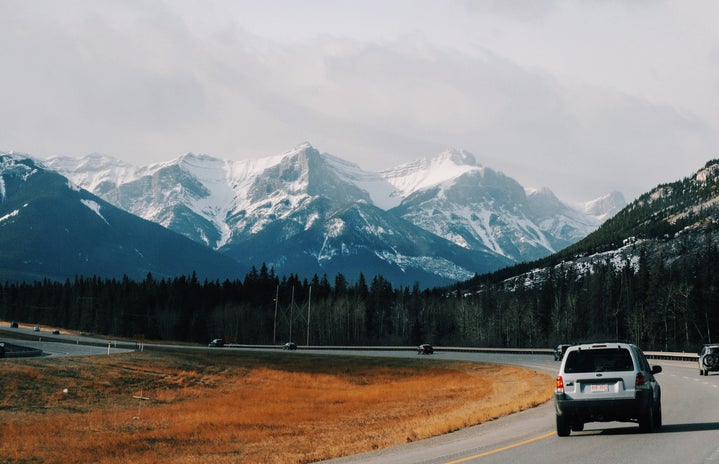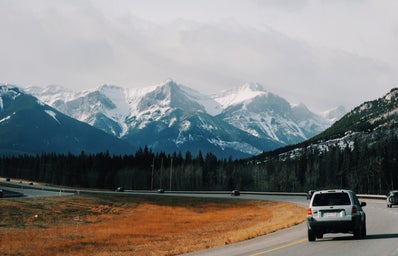When my parents got married, they did it on skis. I myself have been skiing since I was 2 years old. It’s a staple of all of my winters and something I look forward to every summer–not to mention, it was a huge factor in deciding what college I wanted to go to (never mind the fact that COVID put my skiing on pause as soon as I started my freshman year). It’s led me to become passionate about the environment and the outdoors, and it’s pushed me into a community of active outdoor enthusiasts who all care about fighting climate change and preserving our natural playgrounds to explore for as long as possible.
But, when I’m sitting in standstill traffic, watching hundreds of cars emit large amounts of carbon dioxide into the already-changing atmosphere, waiting to visit a mountain that has had much of its trees, undergrowth, and foliage chopped down in the name of one of my favorite activities, I can’t help but wonder: how can a sport that attracts so many outdoor enthusiasts be so environmentally questionable?
It’s painful for skiers and snowboarders alike to admit that the winter activity they love is killing itself. While we are fighting to preserve our winters and keep alpine sports alive in increasingly warm temperatures, ski resorts are silently undermining the efforts of their patrons.
According to Science Magazine Eos, 90% of western ski resorts won’t be financially viable by 2085 because of climate change. For an industry worth billions of dollars, this is staggering.
This leaves skiers with the ultimate question: do I keep skiing while I can, or do I stop doing what I love to try and preserve the sport forever?
As with all climate conundrums, the answer is: it’s complicated.
First, you need to separate the different niches of the sport. Cross-country skiing is not really the problem here. It’s been a part of many different cultures and traditions for over 5,000 years, and despite negative impacts on wildlife and its contributions to deforestation, its environmental impact is minimal compared to downhill skiing. Its carbon footprint is “as low as the gas it takes to get out there,” and while it’s a difficult sport, it can be just as exciting as downhill skiing. For those who really can’t morally align with the big ski resorts, cross-country skiing may be the switch you need.
Downhill skiing, which I think of as the older, richer, and douchier brother of cross-country skiing (don’t get me wrong, I love it), is the real issue when it comes to alpine sports and their environmental impact. As someone who was raised on the ski slopes, it’s hard to admit, but when it comes to wildlife impact, deforestation, water usage, and fossil fuels usage, downhill skiing is the real culprit.
Those running big downhill ski resorts haven’t historically come off as the most environmentally (or ethically, if we’re being honest) conscious people in the world, either. In 2019, former president of the International Ski Federation, Gian Franco Kasper, made a comment that he preferred working with “dictators to environmentalists” when it came to the ski industry.
Vail Resorts Management Company is another controversial, billion-dollar figurehead in the downhill skiing world, operating 41 resorts around the world. Besides overcrowded resorts, questionable season-opening dates, and the horrible treatment of workers, Vail Resorts has undoubtedly been a huge playmaker when it comes to carbon emissions and water usage. That being said, it has committed to a zero-carbon emission goal by 2030.
So, yes, skiing is currently bad for the environment. Embarrassingly so. But, as Auden Schendler, vice president of sustainability of Aspen Skiing Company said in a 2018 interview with National Geographic, so is everything else.
“It’s not skiing that is the problem, it’s how we power our economy. Nothing can be eco-friendly in a world running on fossil fuels,” said Auden.
Is Auden biased in telling people that it’s okay to ski? Sure. Am I also biased in writing this article as a skier? Most definitely. Do I think that I will single-handedly save the ski industry by not paying for an Ikon or Epic Pass this year? Most definitely not.
The sad fact is that the skiing industry is not an anomaly in terms of how it is affecting the environment. As Auden said, the issue of valuing profits over the environment is a global phenomenon at this point, not just one of Vail Resorts.
More and more resorts are making promises like Vail, though. Aspen is slowly but surely making the switch to renewable energy for its snow guns and lifts. The Ikon Company partnered with “Shred for Sustainability” in 2021 to plant 22,500 trees in North America. Change is happening–whether it’s happening fast enough for us to be shredding into our middle ages? Only time will tell.
Ultimately, skiers, it’s up to you how to combat your contributions to climate change that skiing brings. All that I ask is that you acknowledge it. Whether it’s thrifting and donating gear, spending more time cross-country skiing, carpooling to resorts, or contacting ski resort CEOs to ask about their climate mission (here’s the contact information for Vail Resorts), there’s bound to be something you’re comfortable with doing to help address your impact.
For now, the environmental impacts of skiing don’t necessarily mean you aren’t allowed to get out there and enjoy the mountain air and fresh snow. Appreciating nature and what it gives us will always be important, and if skiing is the way you want to do that, then go for it — just don’t take it for granted anymore.


